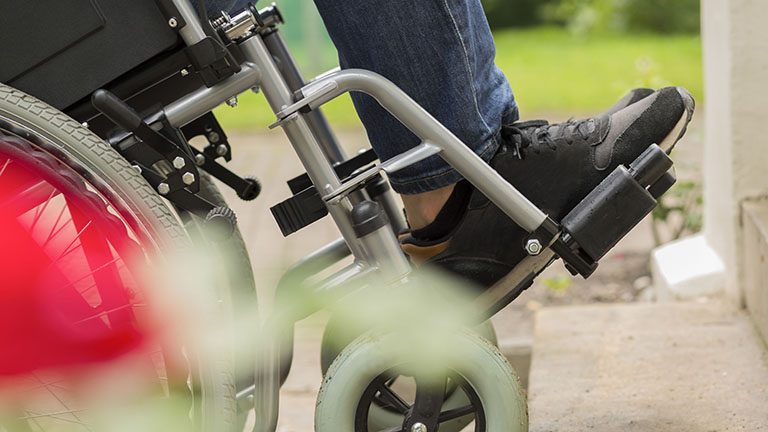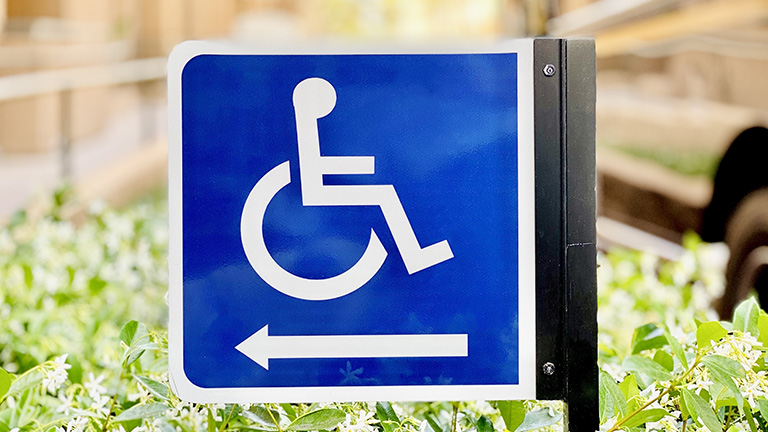Title III of the Americans with Disabilities Act (ADA) prohibits discrimination, “On the basis of disability in the full and equal enjoyment of the goods, services, facilities, privileges, advantages, or accommodations by any person who owns, leases (or leases to), or operates a place of public accommodation.” Therefore, it would seem that the best way to avoid accessibility litigation is to simply be compliant with all of the rules set forth by the ADA. However, the ADA is a complaint-driven law, meaning that even perceived compliance doesn’t exclude anyone from potential litigation. This includes anyone involved in the decision making process of a facility, such as architects, contractors, business owners, and even cities. Despite such a challenge, in the event of litigation, being able to prove ADA compliance in court MAY help to sidestep severe legal repercussions.
Therefore, how is it possible to ensure compliance?
Barrier 1: Understanding Civil Rights legislation vs. Building Code
Much of the ADA is detailed in legal terms rather than laid out as specific technical requirements, such as the requirements one would find in building code. This is due to the ADA being enacted as civil rights legislation. For example, “reasonable accommodation” is defined by the ADA National Network as,
…any modification or adjustment to a job or the work environment that will enable an applicant or employee with a disability to participate in the application process or to perform essential job functions. Reasonable accommodation also includes adjustments to assure that an individual with a disability has rights and privileges in employment equal to those of employees without disabilities.
Such definitions cause trouble due to their lack of specificity, and incorrect interpretations of these definitions has led to a proliferating number of lawsuits since 1990.
Solution: Hire a consultant
ADA consultants are often legal representatives, architects, engineers, or other certified individuals, all of which specialize in accessibility requirements and universal design. They will be able to confirm an establishment’s compliance or offer information about what must be done to make it compliant. Consultants may review architectural plans for new buildings or additions, perform in-depth audits, or offer consultations on the many different aspects of accessibility, such as the ADA, the Fair Housing Act (FHA), the Architectural Barriers Act (ABA), International Building Code (IBC), ANSI A117.1, and the many different versions of accessibility code found throughout the U.S. state and local levels.
Barrier 2: Reconciling various versions of the ADA code
Often, the code versions vary between local municipalities, states, and federal levels. This is due to the time and red tape involved in updating and implementing codes. Unfortunately, this disparity often leads to many instances of misinterpretation.
Solution: Department of Justice (DoJ) Certification
As a way of maintaining some unity across versions, the Department of Justice (DoJ) offers an ADA certification to any state or local municipality who requests it. This certification stands in recognition of any state or municipality’s implementation of equal or greater requirements to that of the federal code. According to the DoJ website, a certification may stand as a testament to a facility’s code compliances in the event of litigation,
…effective enforcement of a certified code can mitigate the need for federal enforcement by ensuring that new or altered buildings are accessible. This process gives building owners and design professionals some assurance in advance of construction that the ADA requirements will be satisfied. And, if a lawsuit is filed, compliance with a certified code may be offered as rebuttable evidence of compliance with the ADA.
However, as these certifications are only available upon request from states and municipalities, not all areas are certified as they may have not requested certification. Check with a local or state code official for confirmation.
Barrier 3: Circumventing ambiguous wording
One aspect of the ADA that frequently causes difficulties is the wording. Partially stemming from the ADA’s existence as civil rights legislation, the wording used throughout the ADA (and much of the ADA Accessibility Guidelines (ADAAG)) is often difficult to translate into actionable items. However, the United States Access Board, who is responsible for the development of the ADAAG, publishes checklists for accessibility self-audits.
Solution: Self-Audits
Self-audits are intended for use in determining the compliance of any structure or area, such as a building, park, or workplace. They are an easy and affordable way of determining compliance without fear of misinterpreting provisions of the ADA. Furthermore, they are free! However, self-audits are not all-encompassing either. Every place and building is unique, so a simple checklist is likely not enough to cover all of the idiosyncrasies designed into a given location. Therefore, when performing self-audits, it is important to be on the lookout for any additional situations that may constitute non-compliance.
Finally, taking any of the above listed or other precautions does not exempt any facility or business from legal action in the event of alleged non-compliance. Furthermore, complying with local, state, or even federal codes does not necessarily mitigate the possibility of lawsuit. Rather, taking steps to ensure ADA compliance with federal ADA code MAY aide in avoiding legal action.
Additional Resources:
For information about the ADA or to contact the U.S. Disability Rights Section, visit the ADA website.
Architects, contractors, and engineers interested in further accessibility code information should visit the wheelchairlift.com technical section.



